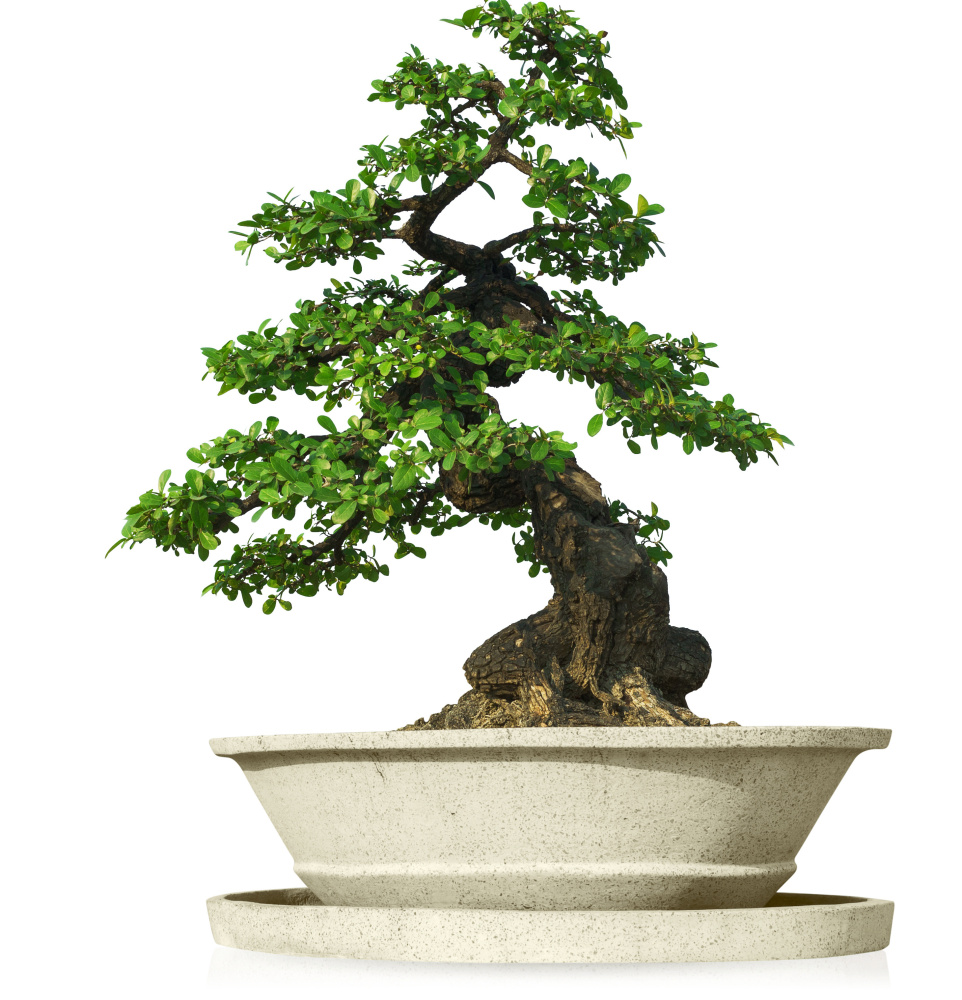Growing bonsai is complicated. It can take six years or more to create a bonsai from a tree purchased at a nursery or scavenged from the wild. But after all that work and time, some of the trees up and die for no apparent reason.
In bonsai, an art that originated in China more than 1,000 years ago, trees that would normally grow as much as 100 feet tall are pruned and trained to grow in a container at the height of just 1 foot or so. These highly groomed miniature trees can sell for thousands of dollars.
Colin Lewis has written several books on bonsai, judges national exhibitions and owns the Ho Yoku School of Bonsai in Biddeford Pool. He considers his bonsai works of art, not just dwarfed plants, and his are priced that way, too.
“What you see in garden centers, country fairs and malls are to bonsai what cartoon greeting cards are to fine art,” he said. He showed me a 6-inch pine that he had just sold for $325.
Lewis works with temperate plants – any that can survive outdoors in the Maine climate – although he protects most of his bonsai in an unheated greenhouse or unheated garage during the winter. Native plants that work especially well are red spruce, balsam fir and larches, he said, adding that the larches are now trendy.
Bonsai is an art form for the patient gardener. Lewis has a potted yew in his garage that he took – with permission – from a Kennebunkport lawn three years ago. Now that the yew has finally acclimatized to its pot, he will spend the next three years training and trimming the branches and pruning the roots to create a bonsai.
The most important part in plant selection is the trunk, Lewis said. With deciduous plants, he can cut off all the leaves and branches and new branches will sprout, which he can then train.
If he cuts off all the branches of an evergreen, though, it will die, so instead he must shape some of the existing branches. Sometimes, he will cut almost all the way through a branch to shape it. Any more than that, he said, and the tree would die.
Lewis has a bonsai of a hornbeam that was 6 feet tall when he brought it home. He cut off the branches, hollowed out the trunk to make it look like it had been struck by lightning, and trained it into a striking 12-inch-tall little tree.
Timing is everything, Lewis said. With a larch, there are only two weeks a year when you can prune the roots without killing the plant. For other varieties, he can root-prune for four to six weeks.
You can reach Lewis, an Englishman who moved to the United States in 2001, at colinlewisbonsai.com.
Ernie Glabau of Entwood Bonsai in Burnham has been growing and selling bonsai since the 1990s. He is at the other end of the bonsai spectrum.
About 70 percent of the plants he works with are tropical, which won’t survive Maine winters, but can be displayed indoors year-round.
The tropicals he uses most often to create bonsai are jade plants and ficus, the temperate plants are pines and junipers. He usually charges $20 to $25 for his bonsai, he said, selling some at his farm, but the bulk at fairs and craft shows across the state.
In his experience, most people who have some sensitivity toward plants and are willing to do a bit of reading can take care of bonsai. But they should expect some of the plants will die. “Anyone who grows bonsai gets used to killing a tree every so often,” Glabau said.
Find information about Entwood Bonsai at uniquemainefarms.com/uniquemainefarms.com/Entwood_Bonsai.html.
Sue Howard of Scarborough takes classes from Lewis and has been growing bonsai plants for about three years. She’d scheduled an organizational meeting to form a bonsai club for today. But she canceled the meeting a few days ago due to lack of response. She asked that bonsai enthusiasts reading this story and interested in forming a club to get in touch: showard@howardvocational.com. Lewis, for one, hopes they do. A local club, he said, could bring more interest to what he considers an under-appreciated art form.
Tom Atwell has been writing the Maine Gardener column since 2004. He is a freelance writer gardening in Cape Elizabeth and can be contacted at 767-2297 or at tomatwell@me.com.
Copy the Story LinkSend questions/comments to the editors.



Success. Please wait for the page to reload. If the page does not reload within 5 seconds, please refresh the page.
Enter your email and password to access comments.
Hi, to comment on stories you must . This profile is in addition to your subscription and website login.
Already have a commenting profile? .
Invalid username/password.
Please check your email to confirm and complete your registration.
Only subscribers are eligible to post comments. Please subscribe or login first for digital access. Here’s why.
Use the form below to reset your password. When you've submitted your account email, we will send an email with a reset code.